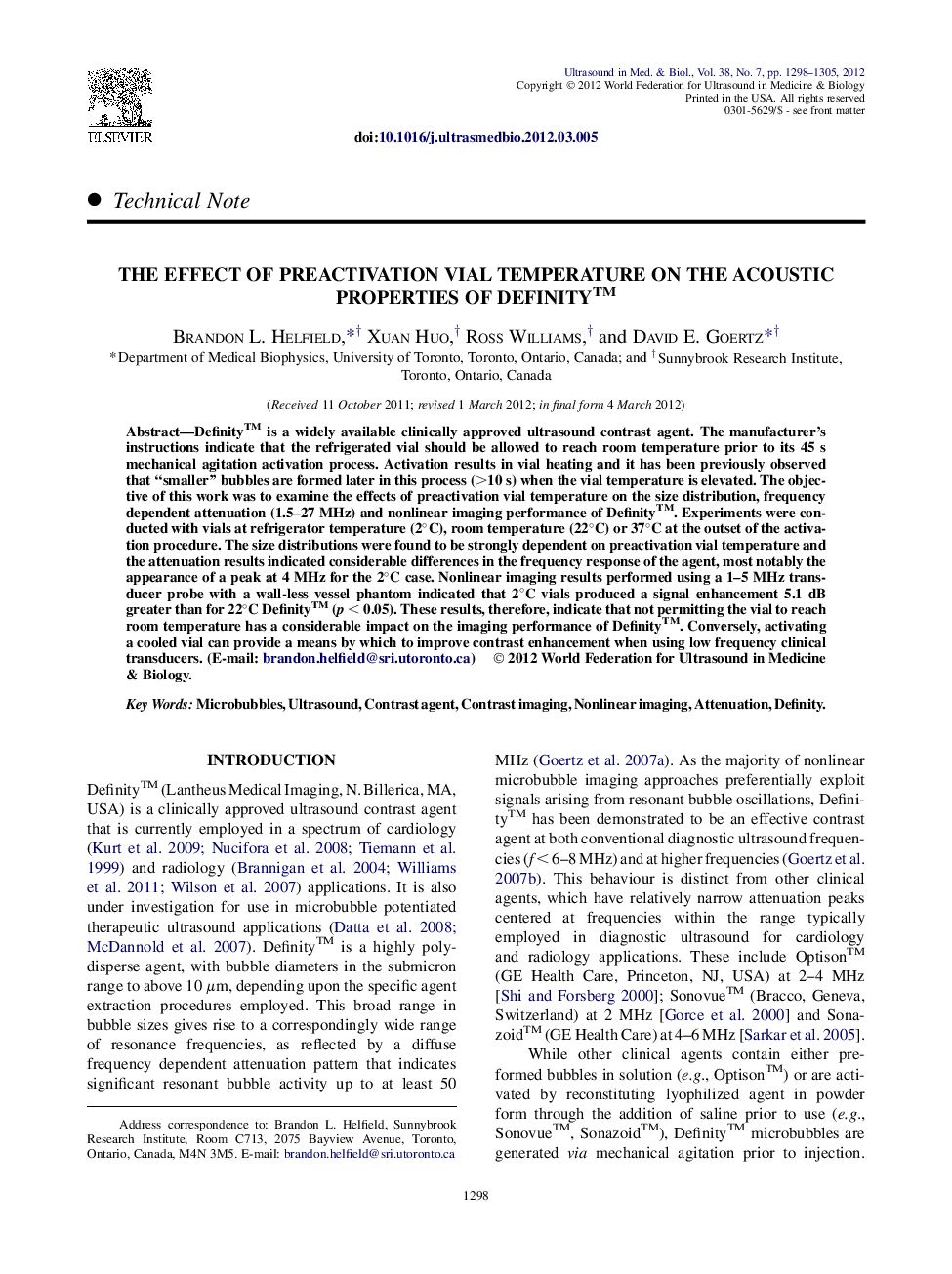| Article ID | Journal | Published Year | Pages | File Type |
|---|---|---|---|---|
| 10692163 | Ultrasound in Medicine & Biology | 2012 | 8 Pages |
Abstract
DefinityTM is a widely available clinically approved ultrasound contrast agent. The manufacturer's instructions indicate that the refrigerated vial should be allowed to reach room temperature prior to its 45 s mechanical agitation activation process. Activation results in vial heating and it has been previously observed that “smaller” bubbles are formed later in this process (>10 s) when the vial temperature is elevated. The objective of this work was to examine the effects of preactivation vial temperature on the size distribution, frequency dependent attenuation (1.5-27 MHz) and nonlinear imaging performance of DefinityTM. Experiments were conducted with vials at refrigerator temperature (2°C), room temperature (22°C) or 37°C at the outset of the activation procedure. The size distributions were found to be strongly dependent on preactivation vial temperature and the attenuation results indicated considerable differences in the frequency response of the agent, most notably the appearance of a peak at 4 MHz for the 2°C case. Nonlinear imaging results performed using a 1-5 MHz transducer probe with a wall-less vessel phantom indicated that 2°C vials produced a signal enhancement 5.1 dB greater than for 22°C DefinityTM (p < 0.05). These results, therefore, indicate that not permitting the vial to reach room temperature has a considerable impact on the imaging performance of DefinityTM. Conversely, activating a cooled vial can provide a means by which to improve contrast enhancement when using low frequency clinical transducers.
Related Topics
Physical Sciences and Engineering
Physics and Astronomy
Acoustics and Ultrasonics
Authors
Brandon L. Helfield, Xuan Huo, Ross Williams, David E. Goertz,
